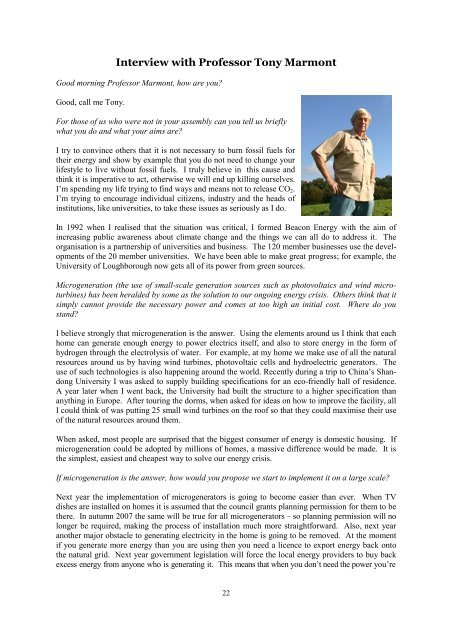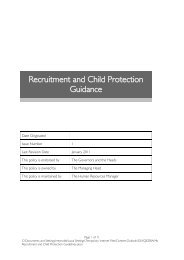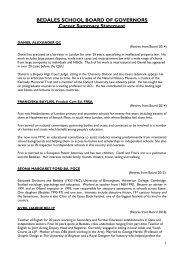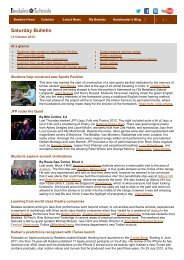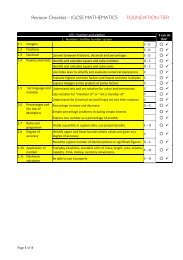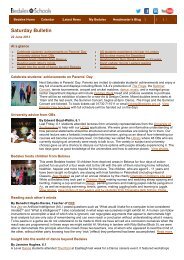You also want an ePaper? Increase the reach of your titles
YUMPU automatically turns print PDFs into web optimized ePapers that Google loves.
Interview with Professor Tony MarmontGood morning Professor Marmont, how are you?Good, call me Tony.For those of us who were not in your assembly can you tell us brieflywhat you do and what your aims are?I try to convince others that it is not necessary to burn fossil fuels fortheir energy and show by example that you do not need to change yourlifestyle to live without fossil fuels. I truly believe in this cause andthink it is imperative to act, otherwise we will end up killing ourselves.I’m spending my life trying to find ways and means not to release CO 2 .I’m trying to encourage individual citizens, industry and the heads ofinstitutions, like universities, to take these issues as seriously as I do.In 1992 when I realised that the situation was critical, I formed Beacon Energy with the aim ofincreasing public awareness about climate change and the things we can all do to address it. Theorganisation is a partnership of universities and business. The 120 member businesses use the developmentsof the 20 member universities. We have been able to make great progress; for example, theUniversity of Loughborough now gets all of its power from green sources.Microgeneration (the use of small-scale generation sources such as photovoltaics and wind microturbines)has been heralded by some as the solution to our ongoing energy crisis. Others think that itsimply cannot provide the necessary power and comes at too high an initial cost. Where do youstand?I believe strongly that microgeneration is the answer. Using the elements around us I think that eachhome can generate enough energy to power electrics itself, and also to store energy in the form ofhydrogen through the electrolysis of water. For example, at my home we make use of all the naturalresources around us by having wind turbines, photovoltaic cells and hydroelectric generators. Theuse of such technologies is also happening around the world. Recently during a trip to China’s ShandongUniversity I was asked to supply building specifications for an eco-friendly hall of residence.A year later when I went back, the University had built the structure to a higher specification thananything in Europe. After touring the dorms, when asked for ideas on how to improve the facility, allI could think of was putting 25 small wind turbines on the roof so that they could maximise their useof the natural resources around them.When asked, most people are surprised that the biggest consumer of energy is domestic housing. Ifmicrogeneration could be adopted by millions of homes, a massive difference would be made. It isthe simplest, easiest and cheapest way to solve our energy crisis.If microgeneration is the answer, how would you propose we start to implement it on a large scale?Next year the implementation of microgenerators is going to become easier than ever. When TVdishes are installed on homes it is assumed that the council grants planning permission for them to bethere. In autumn 2007 the same will be true for all microgenerators – so planning permission will nolonger be required, making the process of installation much more straightforward. Also, next yearanother major obstacle to generating electricity in the home is going to be removed. At the momentif you generate more energy than you are using then you need a licence to export energy back ontothe natural grid. Next year government legislation will force the local energy providers to buy backexcess energy from anyone who is generating it. This means that when you don’t need the power you’re22


